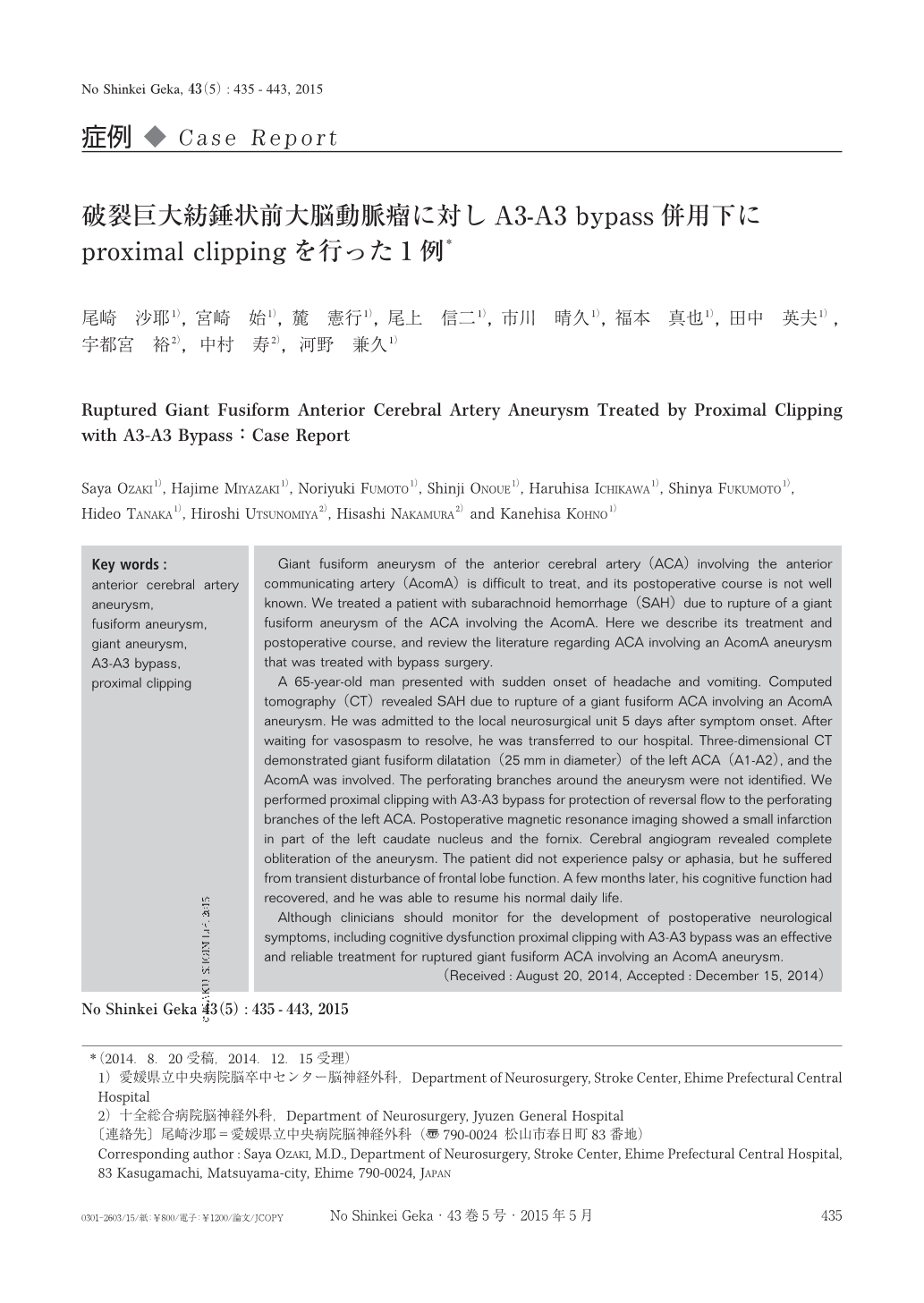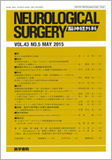Japanese
English
- 有料閲覧
- Abstract 文献概要
- 1ページ目 Look Inside
- 参考文献 Reference
Ⅰ.はじめに
多くの血管が絡む前交通動脈近傍の巨大脳動脈瘤は,頻度は低いものの治療困難な症例が多く,個々の症例に応じて治療方針を検討しなければならない.しかし,特に破裂例に関して治療方針や術後画像所見,高次脳機能を含む予後について述べた文献は少ない.今回,われわれは左前大脳動脈から発生し,前交通動脈を巻き込んだ破裂巨大紡錘状前大脳動脈瘤に対してA3-A3 bypass併用下にproximal clippingを行った症例を経験した.その治療戦略および術後経過について文献的考察を含めて報告する.
Giant fusiform aneurysm of the anterior cerebral artery(ACA)involving the anterior communicating artery(AcomA)is difficult to treat, and its postoperative course is not well known. We treated a patient with subarachnoid hemorrhage(SAH)due to rupture of a giant fusiform aneurysm of the ACA involving the AcomA. Here we describe its treatment and postoperative course, and review the literature regarding ACA involving an AcomA aneurysm that was treated with bypass surgery.
A 65-year-old man presented with sudden onset of headache and vomiting. Computed tomography(CT)revealed SAH due to rupture of a giant fusiform ACA involving an AcomA aneurysm. He was admitted to the local neurosurgical unit 5 days after symptom onset. After waiting for vasospasm to resolve, he was transferred to our hospital. Three-dimensional CT demonstrated giant fusiform dilatation(25mm in diameter)of the left ACA(A1-A2), and the AcomA was involved. The perforating branches around the aneurysm were not identified. We performed proximal clipping with A3-A3 bypass for protection of reversal flow to the perforating branches of the left ACA. Postoperative magnetic resonance imaging showed a small infarction in part of the left caudate nucleus and the fornix. Cerebral angiogram revealed complete obliteration of the aneurysm. The patient did not experience palsy or aphasia, but he suffered from transient disturbance of frontal lobe function. A few months later, his cognitive function had recovered, and he was able to resume his normal daily life.
Although clinicians should monitor for the development of postoperative neurological symptoms, including cognitive dysfunction proximal clipping with A3-A3 bypass was an effective and reliable treatment for ruptured giant fusiform ACA involving an AcomA aneurysm.

Copyright © 2015, Igaku-Shoin Ltd. All rights reserved.


